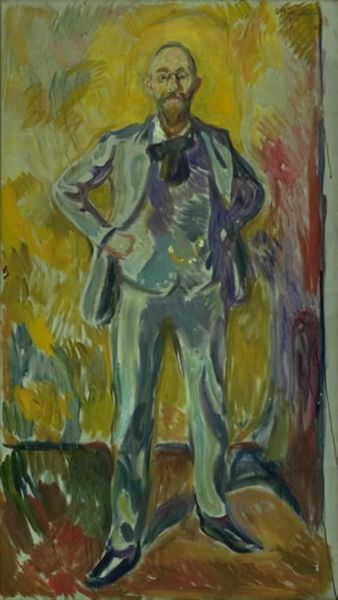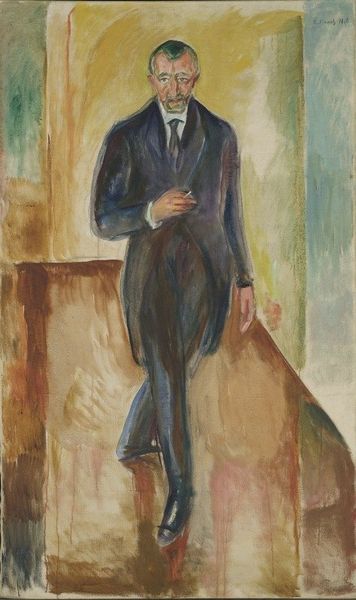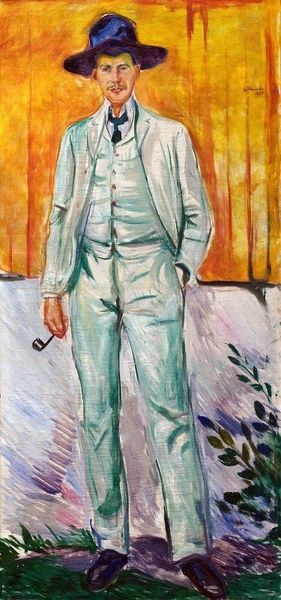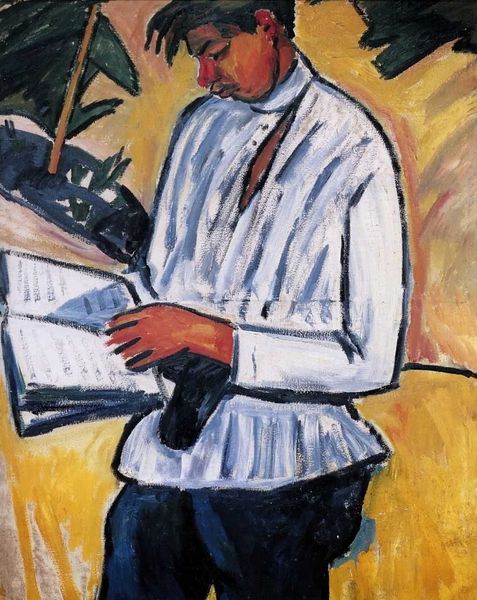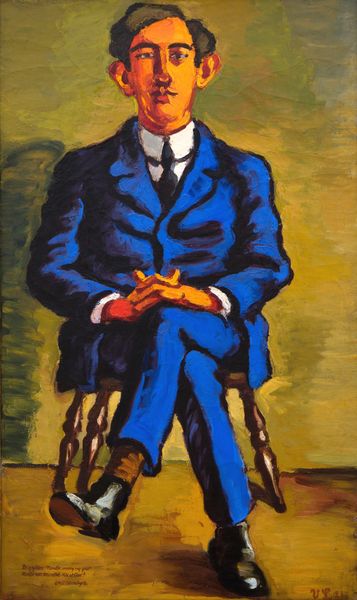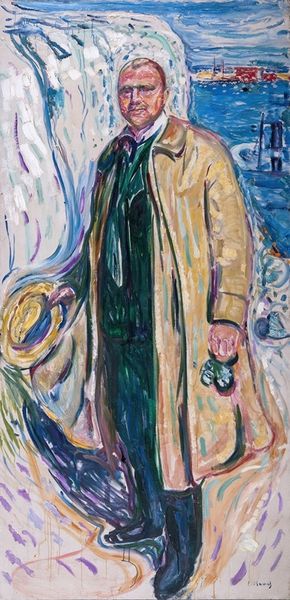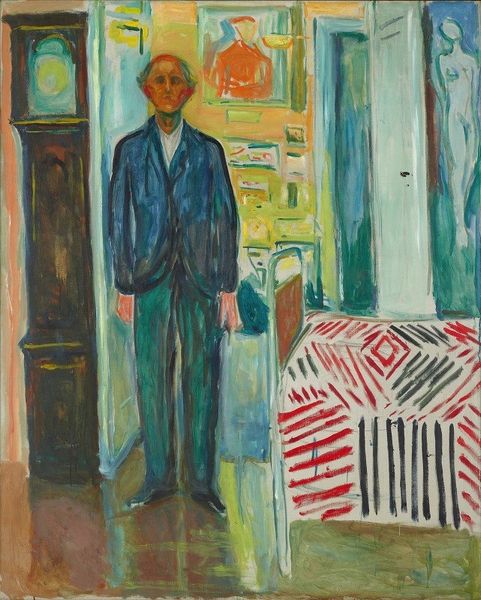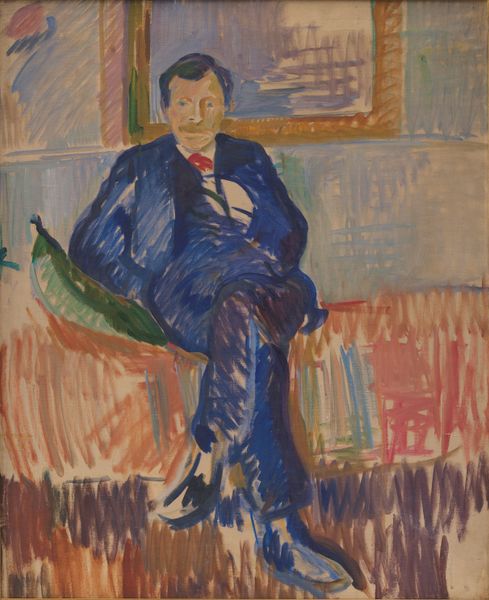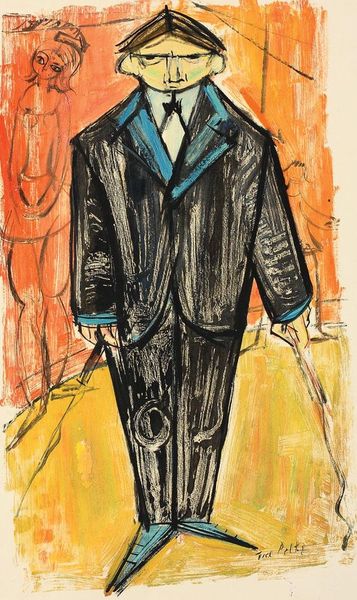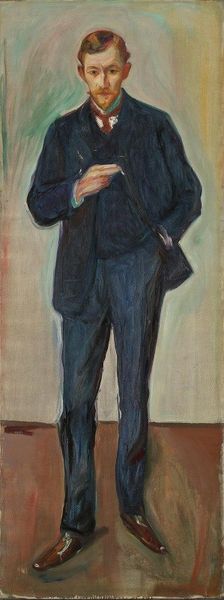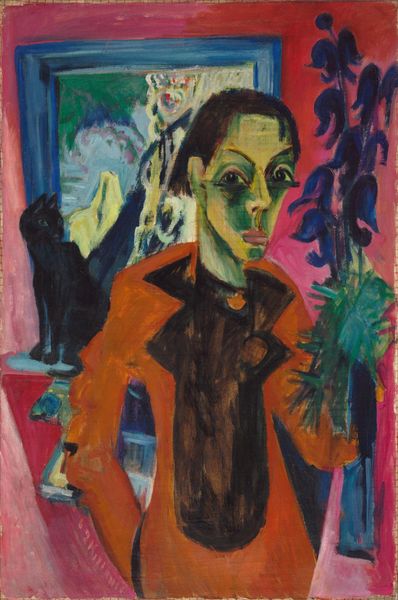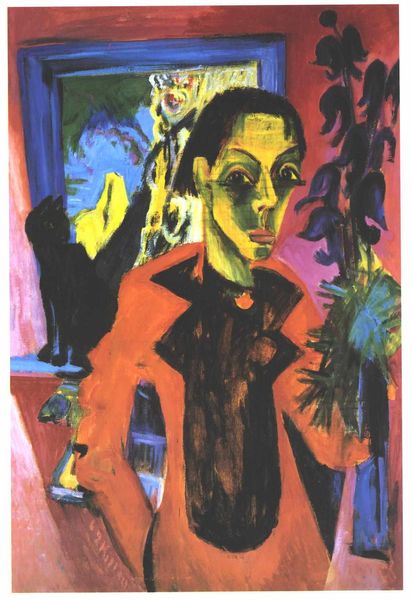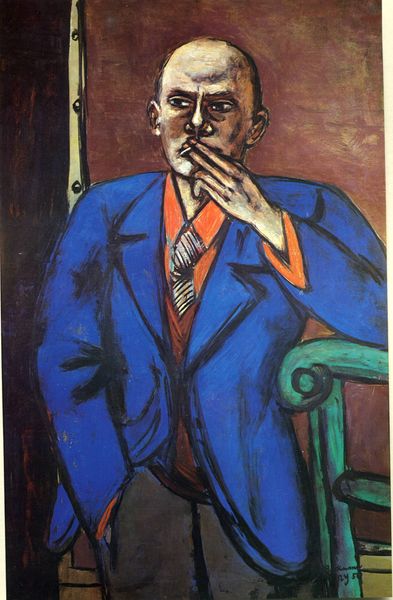
Copyright: Public Domain: Artvee
Edvard Munch rendered this indistinct portrait of Wilhelm Wartmann with oil on canvas. The painting's most striking visual elements are the swirling patterns in the background. These could be interpreted as a representation of internal psychological states, reflecting a mind in turmoil or a space filled with barely suppressed emotion. Consider, for example, the similarities between these swirling patterns and the chaotic, swirling cosmos in Van Gogh's "The Starry Night." While Van Gogh’s sky seems to express a longing for transcendence, Munch’s swirls feel more like a claustrophobic, internal landscape. This motif has appeared throughout art history, resurfacing in varying forms, each time charged with the weight of human emotion. The persistent reappearance of this motif speaks to its power as a symbol, engaging viewers on a deep, subconscious level. It's a testament to the enduring power of visual symbols to tap into the collective consciousness.
Comments
No comments
Be the first to comment and join the conversation on the ultimate creative platform.
